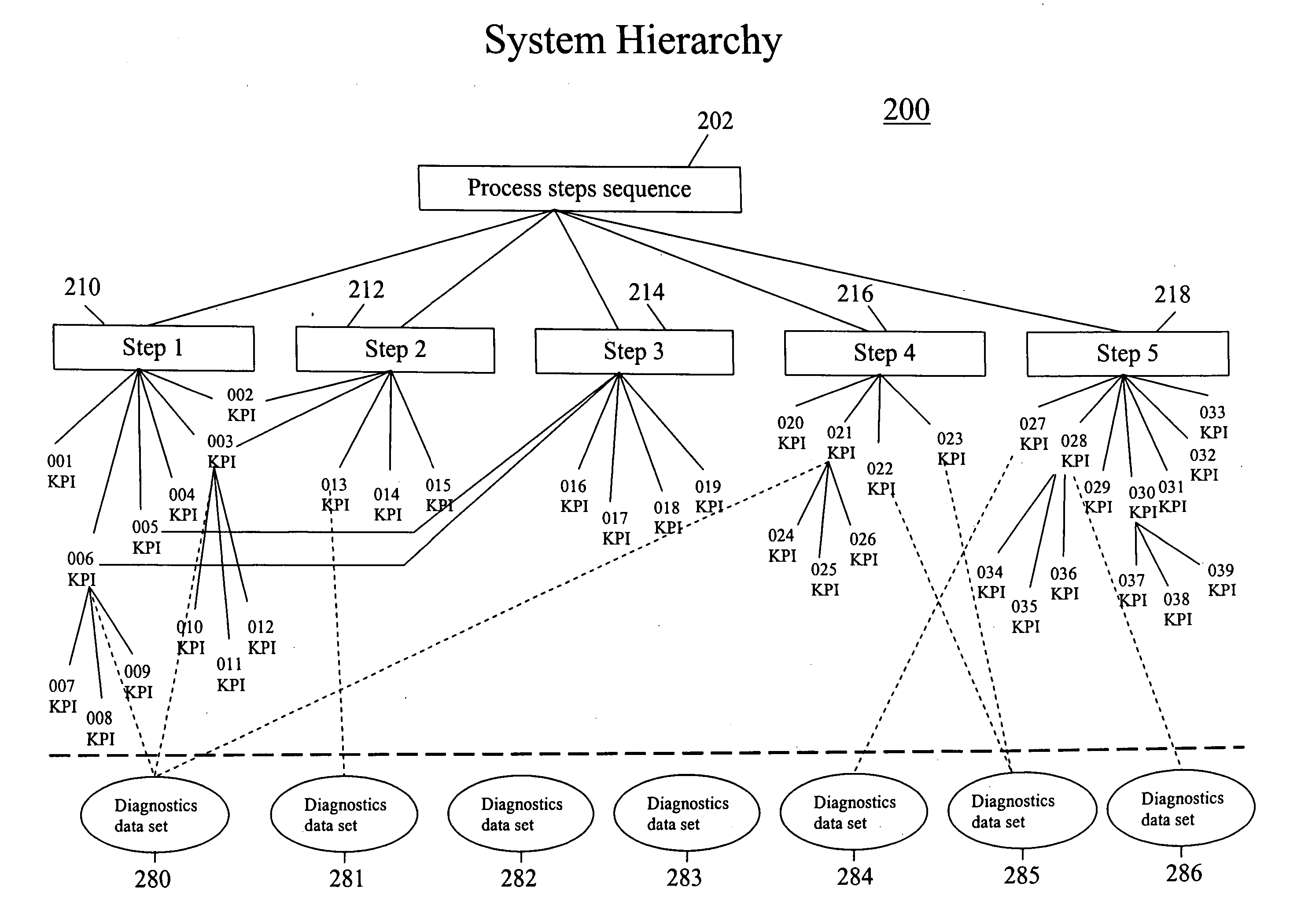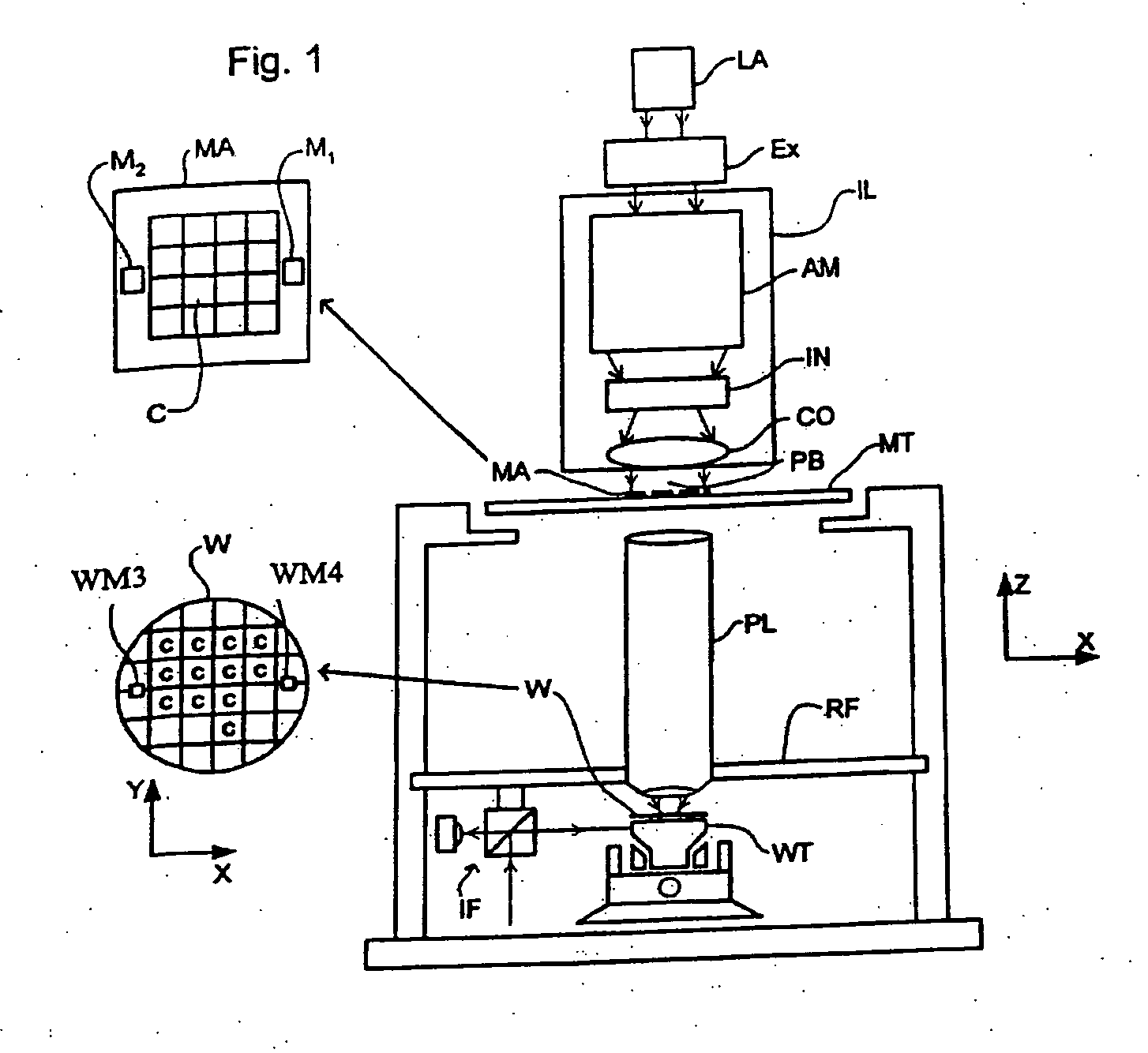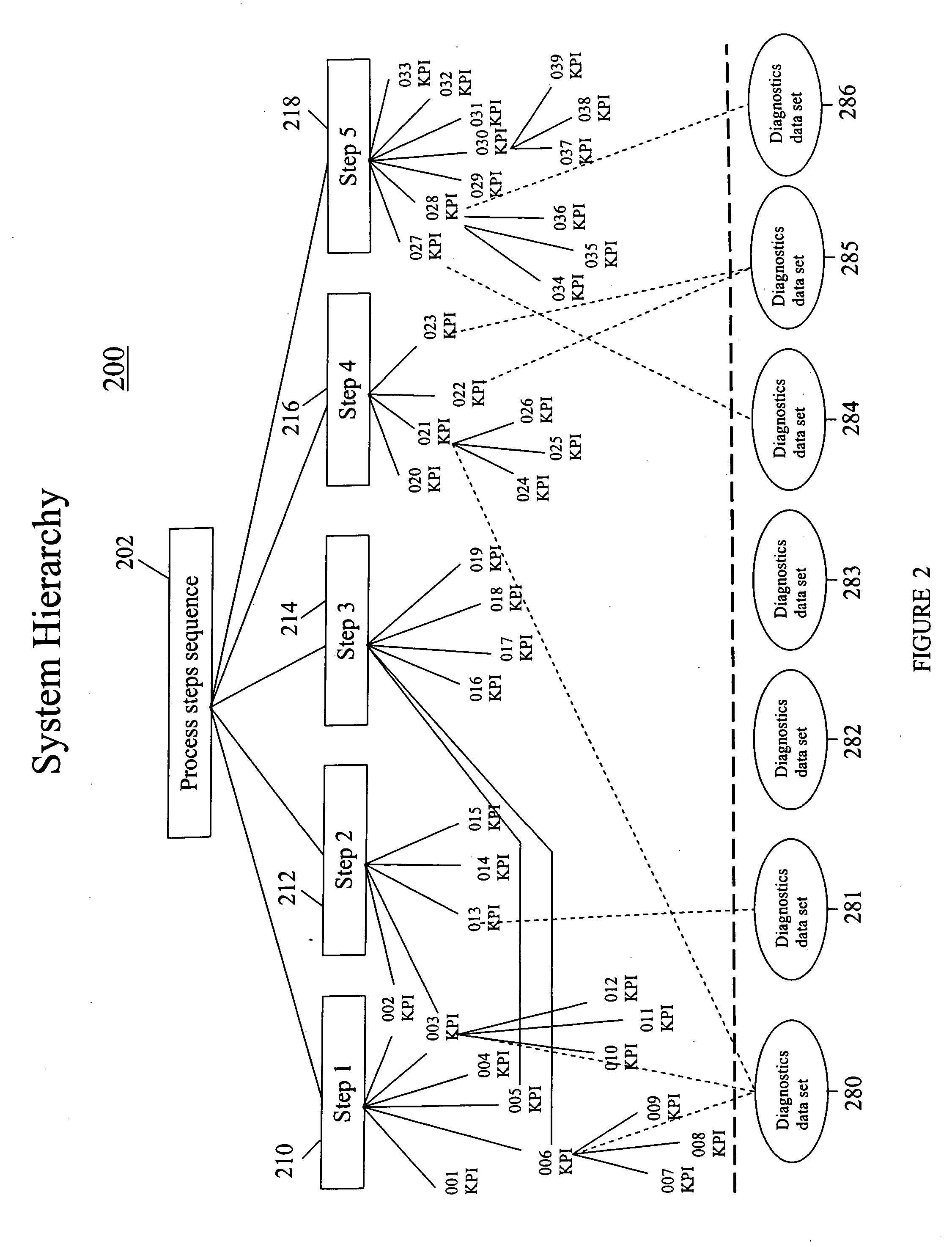System and method of monitoring and diagnosing system condition and performance
a technology of system condition and performance, applied in the field of systems and methods of monitoring and diagnosing functional and/or performance aspects of operations, can solve the problems of not providing sufficient information, unable to preventative measures to be taken, performance failure and/or degradation detected, etc., to save time during fault determination analysis and improve the time to repair
- Summary
- Abstract
- Description
- Claims
- Application Information
AI Technical Summary
Benefits of technology
Problems solved by technology
Method used
Image
Examples
Embodiment Construction
[0032]FIG. 1 schematically depicts a lithographic apparatus according to a particular embodiment of the invention. The apparatus includes an illumination system (illuminator) IL for providing a projection beam PB of radiation (e.g. UV radiation or DUV radiation); a first support structure (e.g. a mask table) MT for supporting patterning structure (e.g. a mask) MA and connected to first positioner PM for accurately positioning the patterning structure with respect to item PL; a substrate table (e.g. a wafer table) WT for holding a substrate (e.g. a resist-coated wafer) W and connected to second positioner PW for accurately positioning the substrate with respect to item PL; and a projection system (e.g. a refractive projection lens) PL mounted on a frame F and configured to image a pattern imparted to the projection beam PB by patterning structure MA onto a target portion C (e.g. comprising one or more dies) of the substrate W.
[0033] As here depicted, the apparatus is of a transmissi...
PUM
 Login to View More
Login to View More Abstract
Description
Claims
Application Information
 Login to View More
Login to View More - R&D
- Intellectual Property
- Life Sciences
- Materials
- Tech Scout
- Unparalleled Data Quality
- Higher Quality Content
- 60% Fewer Hallucinations
Browse by: Latest US Patents, China's latest patents, Technical Efficacy Thesaurus, Application Domain, Technology Topic, Popular Technical Reports.
© 2025 PatSnap. All rights reserved.Legal|Privacy policy|Modern Slavery Act Transparency Statement|Sitemap|About US| Contact US: help@patsnap.com



